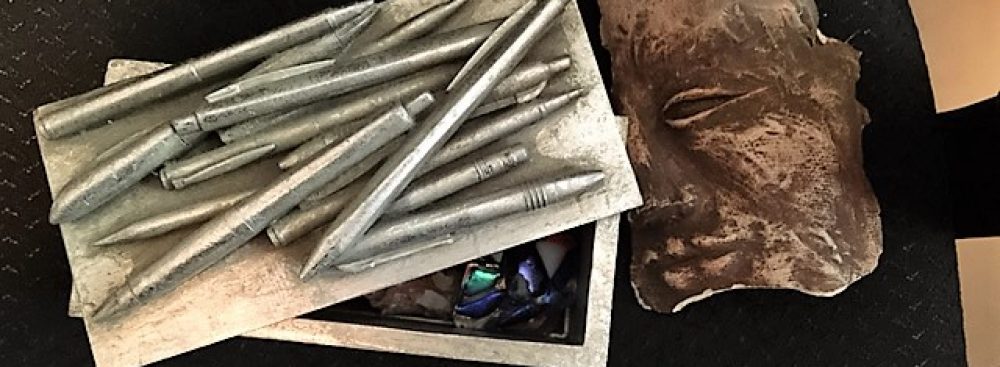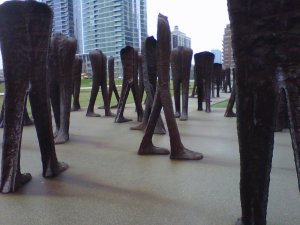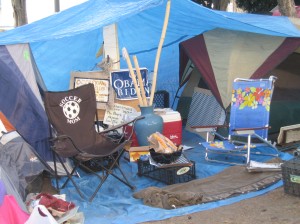 I never imagined that something I wrote could land me in prison.But writing often takes us to strange places, some planned, some inconceivable. This was one of the latter. As the author of a ten minute play being performed by actors for the Jewish Women’s Theatre, I was invited to spend the better part of a Saturday in Corona, at California’s Department of Corrections and Rehabilitation.
I never imagined that something I wrote could land me in prison.But writing often takes us to strange places, some planned, some inconceivable. This was one of the latter. As the author of a ten minute play being performed by actors for the Jewish Women’s Theatre, I was invited to spend the better part of a Saturday in Corona, at California’s Department of Corrections and Rehabilitation.
Frankly, visiting a women’s prison, even by invitation, is a pretty disturbing experience. There was some serious paperwork involved in obtaining permission. Any misspellings were a big deal. Everything was a big deal. We were told we would not be allowed in if we wore blue, or orange, or camouflage patterns, or any patterns. In fact, we were strongly advised to just wear black and white. Presumably this had to do with gang colors or prison guard clothing. Also, no jewelry, no cellphones, no electronics, no purses, no nothing but your government-issued id and a bottle of water. And when we met inmates, no touching except to shake pinkies, not hands. Needless to say, no hugging either, should we be so moved, and stay close to the people who would be escorting us around. Well, that would give anyone pause, right?
The dozen of us – actors, writers, and producers, car-pooled an hour east of LA to Corona, where it routinely heats up to a toasty 110 or more on a summer’s day (which thankfully this was not). Though suburbia is now encroaching on this once isolated desert landscape, the prison was smack up against a dairy farm (no, not Elsie’s – this was like those stinking grass-less cow lots along the 5 freeway in Central California). We looked at the barb wire fence, the guard tower, heard a loudspeaker barking something to the inmates inside and had a collective moment when we felt we might like to quietly get back into our cars and drive the hell out of there.
But the show, as they say, must go on. We entered the Administration Building, lined up like the good girls we are, or were pretending to be for the occasion. The chaplain who had invited us admonished us to follow every instruction we were given and not to ask questions or to argue in any way. “This is one of the mean guards,” she said of the fellow behind the bullet-proof glass who was processing us through one-by-one. Not encouraging. I was especially nervous of the metal detector, which routinely dings on me at the airport because of my titanium hip. The resulting indignity of the pat down usually gives me time to recite my private curse to terrorists everywhere, but what would they do if I dinged the machine here? Full body cavity search? I informed the guard of my condition; he took my id and motioned me to pass through the detector. No ding! Green light! I was pathetically grateful. From then on, we were instructed that no door would open unless the one behind it was closed. This certainly gave that chipper old saying about one door closing and another opening a whole new meaning, and not a happy one. Once through, we found ourselves outside, in a huge, open area criss-crossed with badly paved paths, crab grass, and lots of women walking around in mostly white-ish baggy clothes, not uniforms, just tee shirts and sweat pants that looked like they’d had too many washings.
2,000 women live in this place, and hundreds more are coming, owing to a prison closure in Northern California. we were told. The bungalows they live in look a lot like the ones they’ve jammed into our public schoolyards, only worse. The original buildings look a bit worse for the wear too. Metal is rusted. Things look sparse, colorless. We pass inmates who say hello. We stop and shake pinkies with someone who recognized the chaplain escorting us. People seem to walk in twos.
Then we arrived at the chapel; another prefab bungalow. A Shabbat service was in progress. It was immediately apparent that this rabbi knew his congregants well, many of whom, we realized as we settled in, were not Jewish but must have been drawn to his compassion and the way he linked the week’s Torah portion to issues that spoke to the heart of what it is to be someone who has lost their freedom. Some of the Jewish women there had made their prayer shawls. He called them the Women of Light. We listened, we sang along, and then it was our turn.
The production we were presenting is called Eden According to Eve. The original “mission” for the writers was to take a female biblical character and place her in a contemporary setting.
The show has seven pieces. There is the recounting of Eden from Eve’s point of view by comedienne Shelly Goldstein (there was only one man in the world, a good one, says Eve – and I had to go pick the snake…). My play, After These Things, is about Sarah painfully confronting Abe about the horrifying thing he did to make their 40 year old son finally grow up and leave home. 89 year old Sarah Hershberg sang her Rebecca’s Song with guitar; about knowing how quickly life passes. Artistic Director Ronda Spinak’s piece, The Living Child in Two is about a woman, Judge Solomon, questioning the wisdom of joint custody as she presides over her Family Law courtroom, given her own child’s experience. A hilarious piece by Monica Piper; Don’t Hate Me Because I’m Beautiful subtly questions our universal disdain for Delilah. Rabbi Lynne Kern wove a connection between the rape of Deena and the rape of CBS Senior Foreign Correspondent Lara Logan in Tahrir Square last year. And finally, Saved by a Song, by Arlene Sarner, recounts how repeatedly singing the prayer Oseh Shalom allowed her to survive the suicide of her mentally ill son and made her realize that, like Miriam leading the women in song at the Red Sea, there is a connection between music and hope.
Context, as they say, is everything. Eden According to Eve has been performed in homes, in synagogues, and other venues, but it’s never had quite the impact it had at the women’s prison that day. As I watched those women, many of whom were openly weeping, I was stunned to realize whole new meanings in each of our pieces. As the rabbi later said, during our Q & A, these women know our stories intimately. Their questions and comments were, in our group’s view, the most profound and forthright of any audience we have met.
Afterwards, we talked, and laughed and they gave us a small glimpse of what their lives are like in prison, which was deeply moving for us.
It was nearly time for lock down and we had to leave. They would spend the next two hours in their cells, a king-size bed space with a bunk bed, toilet and sink. We crossed the yard, clustered together by our escorts. The doors opened and shut again. We lined up in a hall and waited to be processed for our exit. One missing badge, unclipped from our clothing, and the whole prison would have to go through a count.
I turned in my badge, signed myself out, was buzzed through the final locked door and was free again, or at least, on the other side of the chain link fence and barbed wire. As someone said, many people live their lives more incarcerated out here than some of these women who have wrestled with the nature of their freedom while in prison.
And where does this lead? To Egypt, naturally. We have been invited back for the prison’s annual Passover Seder in April. I cannot think of anything more holy than to share that holiday, which is essentially a meditation on the meaning of human freedom, with these extraordinary women.
 Among the hundreds of roadside attractions strung across the American landscape from coast to coast, the World’s Biggest Catsup Bottle holds a strange place in my heart. Yup, that’s a real thing – a watertower, trussed up to look like a bottle of the all-American condiment. It’s been towering over Route 159 outside downtown Collinsville, Illinois since 1949 and has even been added to the National Register of Historic Places. At 170 feet , the “Bottle” is about 70 feet taller than another roadside attraction that’s been standing on the outskirts of Collinsville for considerably longer and took a couple of hundred years to build. That would be Monk’s Mound at the Cahokia Indian Mounds.
Among the hundreds of roadside attractions strung across the American landscape from coast to coast, the World’s Biggest Catsup Bottle holds a strange place in my heart. Yup, that’s a real thing – a watertower, trussed up to look like a bottle of the all-American condiment. It’s been towering over Route 159 outside downtown Collinsville, Illinois since 1949 and has even been added to the National Register of Historic Places. At 170 feet , the “Bottle” is about 70 feet taller than another roadside attraction that’s been standing on the outskirts of Collinsville for considerably longer and took a couple of hundred years to build. That would be Monk’s Mound at the Cahokia Indian Mounds. radish farmers and business owners and plundered by pothunters – to the horror of the few archaeolgists who worked almost without funding to discover the ancient city’s secrets. Monk’s Mound was even the site of KKK cross burnings, back in the early 20th century.
radish farmers and business owners and plundered by pothunters – to the horror of the few archaeolgists who worked almost without funding to discover the ancient city’s secrets. Monk’s Mound was even the site of KKK cross burnings, back in the early 20th century.






